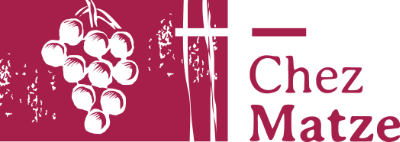 The BioFach in Nuremberg, Germany has established itself over the years as the most important fair worldwide when it comes to anything organic – certified organic, that is. More than 44,000 professional visitors counted this year are the living proof that the scene is ever-growing. Within this context you might imagine that my task of choosing „less than ten“ producers out of the 2,146 ones populating the eight exhibition halls was a mission impossible. And indeed, you are right. So here come nine different (small) producers from nine different countries serving as „My Top Nine Picks“ which I have carefully chosen under the greatest efforts imaginable. Besides that, I already posted an article in German with another eight memorable producers. But with the best intentions, still less than that wouldn’t have been possible…
The BioFach in Nuremberg, Germany has established itself over the years as the most important fair worldwide when it comes to anything organic – certified organic, that is. More than 44,000 professional visitors counted this year are the living proof that the scene is ever-growing. Within this context you might imagine that my task of choosing „less than ten“ producers out of the 2,146 ones populating the eight exhibition halls was a mission impossible. And indeed, you are right. So here come nine different (small) producers from nine different countries serving as „My Top Nine Picks“ which I have carefully chosen under the greatest efforts imaginable. Besides that, I already posted an article in German with another eight memorable producers. But with the best intentions, still less than that wouldn’t have been possible…
Amaz
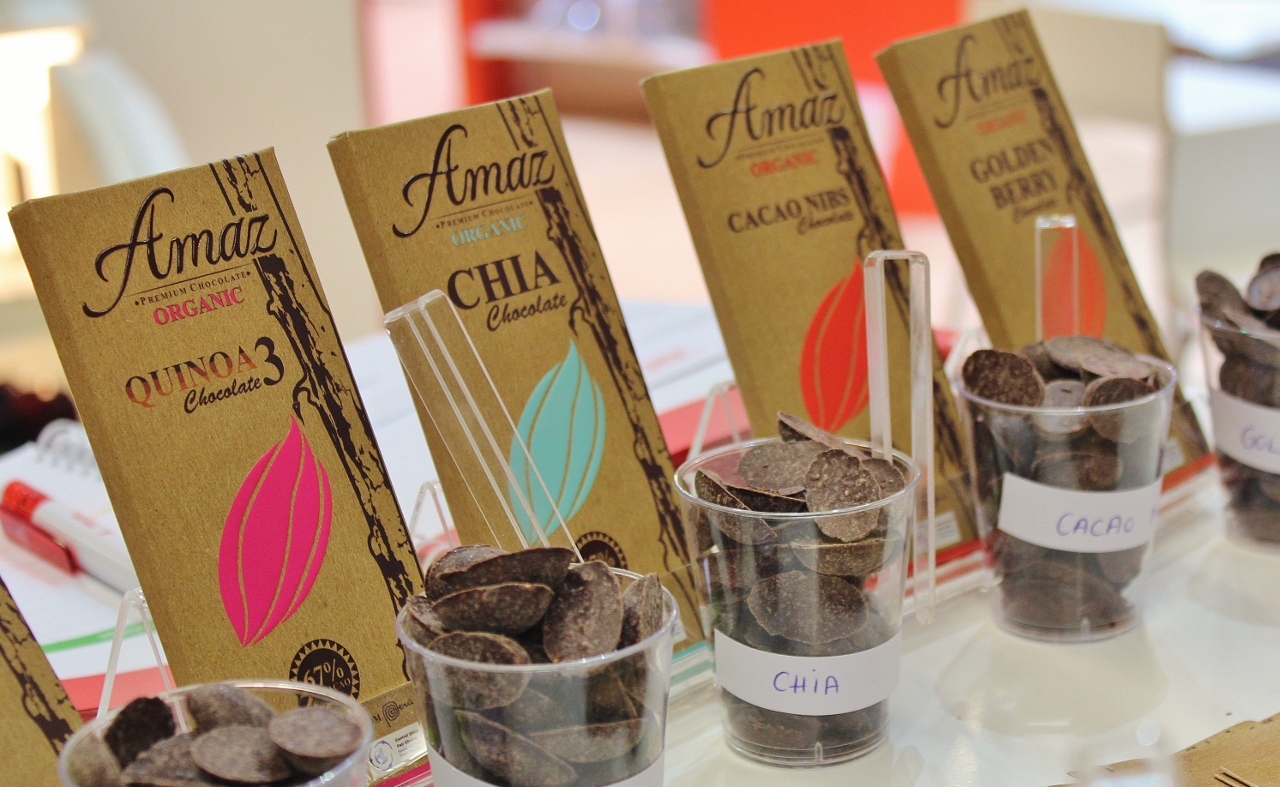 Chocolate was definitely one of the highlights among the myriad of products presented at the BioFach. Here it occurred to me that „organic“ doesn’t have to mean exempting a product from all sinful ingredients unless complete tastelessness is the result. For making excellent chocolate you just need a) a lot of knowledge and b) the very best raw materials. Which are cocoa beans and something to sweeten the whole thing. Nothing else. Amaz are among the small number of producers that don’t just import raw materials from tropical countries (and be it fair & organic), they also create the chocolate on the spot – which is in this case Lima, the capital of Peru. I have chosen the version with roasted Quinoa in it since I thought this would get as close to the Inka heritage as it could get. And indeed, here we are, again, back to the beginning.
Chocolate was definitely one of the highlights among the myriad of products presented at the BioFach. Here it occurred to me that „organic“ doesn’t have to mean exempting a product from all sinful ingredients unless complete tastelessness is the result. For making excellent chocolate you just need a) a lot of knowledge and b) the very best raw materials. Which are cocoa beans and something to sweeten the whole thing. Nothing else. Amaz are among the small number of producers that don’t just import raw materials from tropical countries (and be it fair & organic), they also create the chocolate on the spot – which is in this case Lima, the capital of Peru. I have chosen the version with roasted Quinoa in it since I thought this would get as close to the Inka heritage as it could get. And indeed, here we are, again, back to the beginning.
Batroun Mountains
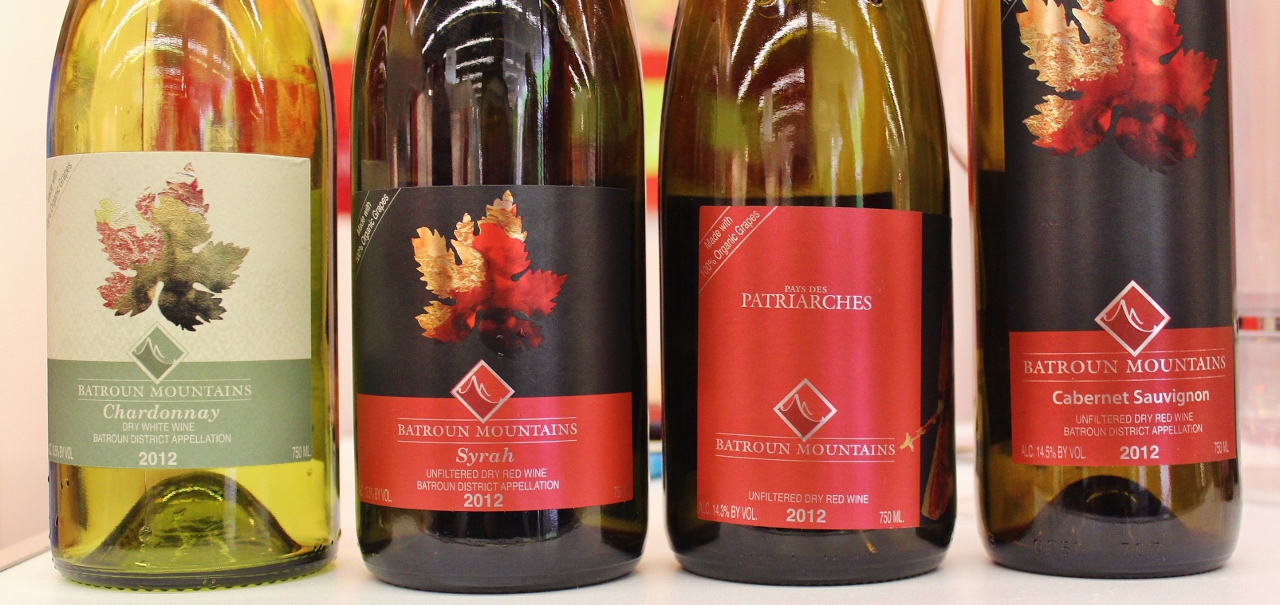 In my ideal world, we all would live together in peace, and this would, of course, include a beautiful place on Earth called the Middle East where peace and happiness seems to be so far beyond what had happened over the past decades. In my ideal world, we could additionally eat and drink whatever we like without blaming the other doing it differently. The logical consequence would be that a place like the Batroun Mountains winery would exist in my ideal world just as it does in reality. The „mountains“ in the name don’t come by chance, by the way, they have snow in wintertime over there, and you can feel it in their wines. So don’t expect your typical Aussie blockbuster just because you think it could get hot in the Middle East. The Shiraz, for example, surprised me with its stony austerity, whereas my favourite was a rather unusual choice for my liking: the Cabernet Sauvignon, the red world wine grape no. 1, but in the interpretation of the Batroun mountaineers, a wine that combines a ripe smoothness with a certain pungency.
In my ideal world, we all would live together in peace, and this would, of course, include a beautiful place on Earth called the Middle East where peace and happiness seems to be so far beyond what had happened over the past decades. In my ideal world, we could additionally eat and drink whatever we like without blaming the other doing it differently. The logical consequence would be that a place like the Batroun Mountains winery would exist in my ideal world just as it does in reality. The „mountains“ in the name don’t come by chance, by the way, they have snow in wintertime over there, and you can feel it in their wines. So don’t expect your typical Aussie blockbuster just because you think it could get hot in the Middle East. The Shiraz, for example, surprised me with its stony austerity, whereas my favourite was a rather unusual choice for my liking: the Cabernet Sauvignon, the red world wine grape no. 1, but in the interpretation of the Batroun mountaineers, a wine that combines a ripe smoothness with a certain pungency.
Cacaocrudo
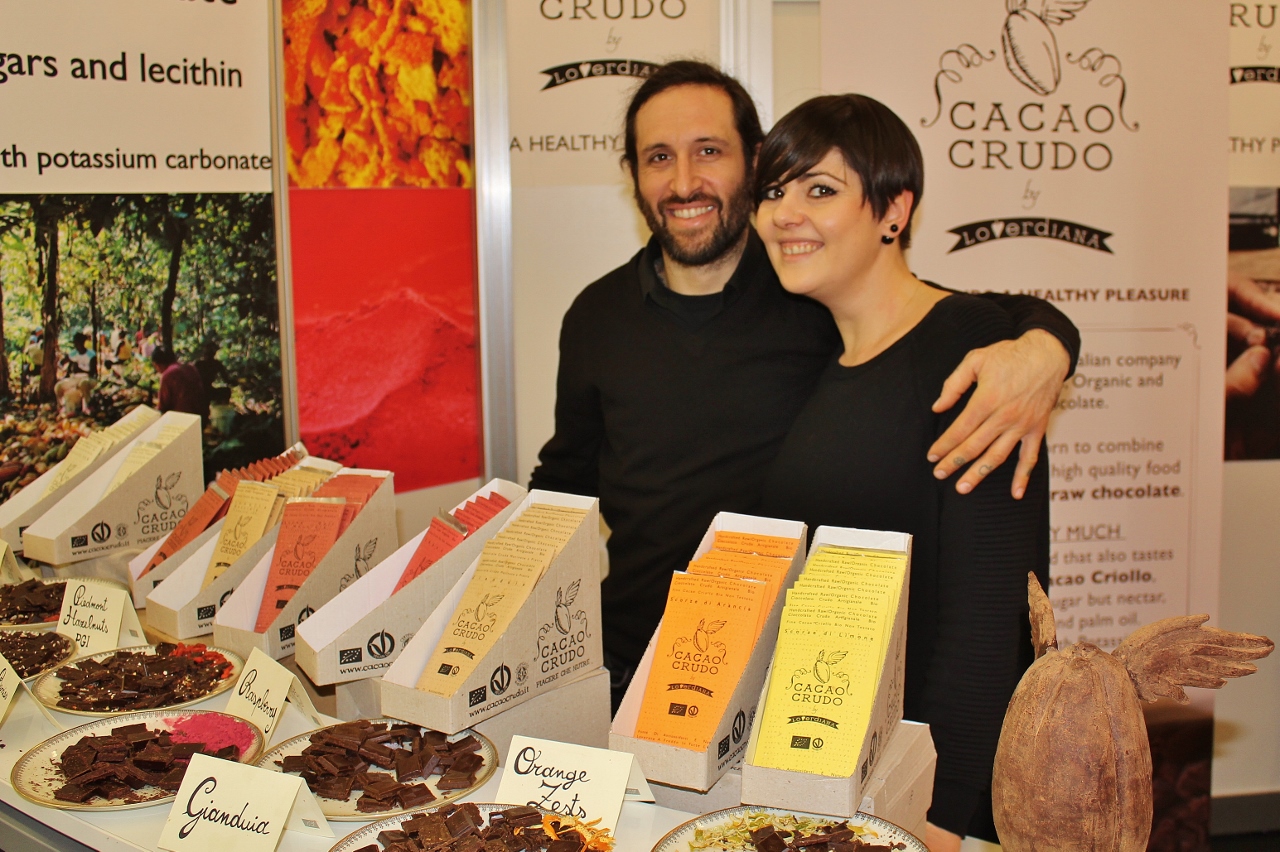 The Italians, so the saying goes, really know one or two things about how to enjoy life. Italian food is known worldwide for its hedonistic tastefulness, and sweet treats play no exception to that. Cacao Crudo from the small town of Labico, less than 40 kilometres away from the Eternal City, do exactly what their name suggests: they use cocoa Criollo from Peru, sweeten it with coconut blossom nectar and add typical Italian ingredients like Piemontese hazelnuts or lemon and orange peels from Sicily (as shown in the cover picture to this article). But as I said before: All good intentions would be wasted if you only produce ethically correct but bland and tasteless things. Fortunately, this isn’t the case with Cacao Crudo (otherwise they wouldn’t appear here, you know). Here the raw, organic and vegan materials are combined with an artisanal attitude. I was surprised by the relative softness of the chocolate that seemed to consist of small, melting clusters of choco-bits rather than a brick. If you like to head towards the unbelievable, try the raspberry chocolate, made with three pounds of fresh raspberries for 100 grams of chocolate. Wow.
The Italians, so the saying goes, really know one or two things about how to enjoy life. Italian food is known worldwide for its hedonistic tastefulness, and sweet treats play no exception to that. Cacao Crudo from the small town of Labico, less than 40 kilometres away from the Eternal City, do exactly what their name suggests: they use cocoa Criollo from Peru, sweeten it with coconut blossom nectar and add typical Italian ingredients like Piemontese hazelnuts or lemon and orange peels from Sicily (as shown in the cover picture to this article). But as I said before: All good intentions would be wasted if you only produce ethically correct but bland and tasteless things. Fortunately, this isn’t the case with Cacao Crudo (otherwise they wouldn’t appear here, you know). Here the raw, organic and vegan materials are combined with an artisanal attitude. I was surprised by the relative softness of the chocolate that seemed to consist of small, melting clusters of choco-bits rather than a brick. If you like to head towards the unbelievable, try the raspberry chocolate, made with three pounds of fresh raspberries for 100 grams of chocolate. Wow.
Enseki Aojiru
 The Japanese cuisine is known for being the purest, strictest and healthiest one you could ever imagine. So whatever the „dernier cri“ may be, whatever physiologists, dietary journals or celebrities declare to be their secret for staying young, slim and physically fit, the Japanese cuisine always has an answer to it, mainly by modestly adding that these things already existed for centuries over there. When Enseki Aojiru from Tōon City on Shikoku island entered the market with their organic kale drink, they told me that many visitors to their booth found the result „tasting very healthy, but perhaps a bit too green“. So they tried to find something that would keep the vitamins in but smoothen the taste – or perhaps complement it. After a while they came up with something traditional but with a non-traditional usage: Shiso leaves (the ones you love when you love Sashimi), dried and pulverized just like matcha powder, add a little tartiness and citrus-like freshness to the cabbage juice. Well, I wouldn’t spend my evening with friends partying over a kale & shiso drink, but in the morning or whenever you feel that dark and grey wintertime gets you down, try a cup of greenliness.
The Japanese cuisine is known for being the purest, strictest and healthiest one you could ever imagine. So whatever the „dernier cri“ may be, whatever physiologists, dietary journals or celebrities declare to be their secret for staying young, slim and physically fit, the Japanese cuisine always has an answer to it, mainly by modestly adding that these things already existed for centuries over there. When Enseki Aojiru from Tōon City on Shikoku island entered the market with their organic kale drink, they told me that many visitors to their booth found the result „tasting very healthy, but perhaps a bit too green“. So they tried to find something that would keep the vitamins in but smoothen the taste – or perhaps complement it. After a while they came up with something traditional but with a non-traditional usage: Shiso leaves (the ones you love when you love Sashimi), dried and pulverized just like matcha powder, add a little tartiness and citrus-like freshness to the cabbage juice. Well, I wouldn’t spend my evening with friends partying over a kale & shiso drink, but in the morning or whenever you feel that dark and grey wintertime gets you down, try a cup of greenliness.
Jiraporn
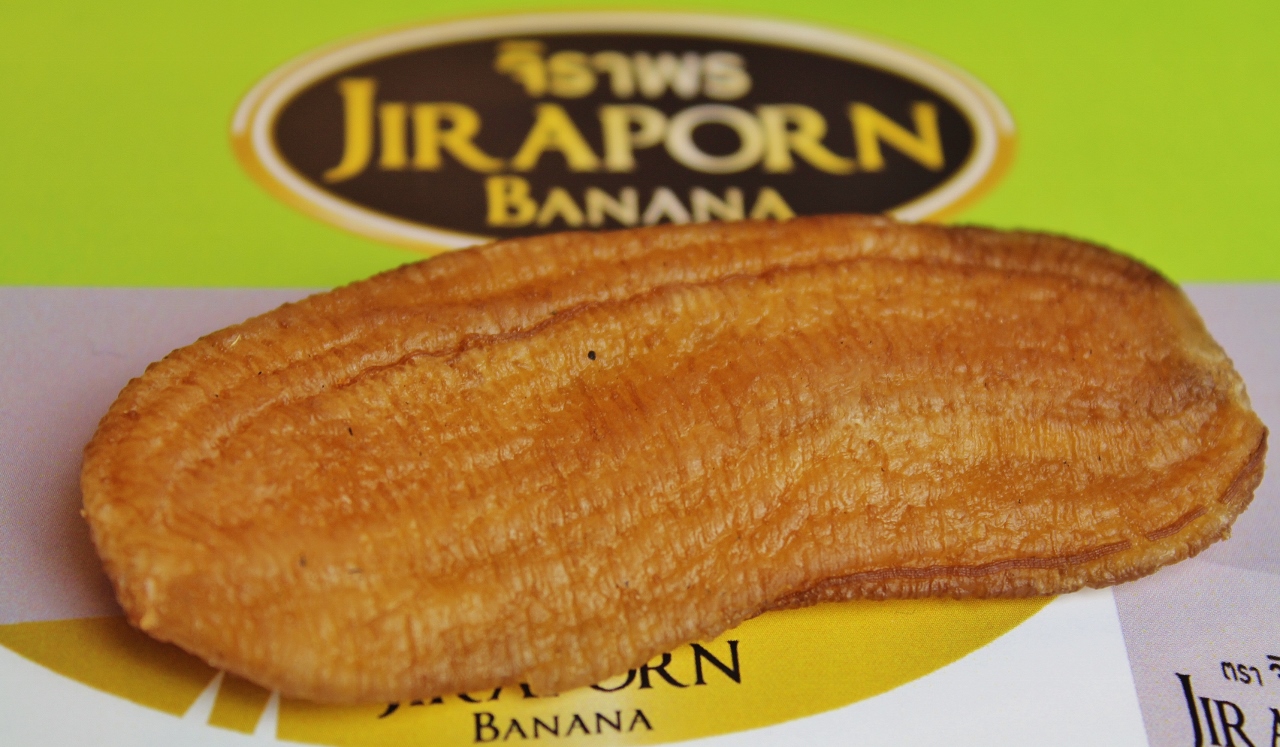 Time plays an important role when it comes to quality and taste of culinary products. Some of them have to be eaten “fresh from the tree” before oxidation takes place, while others (especially when fermentation processes occur) need a longer period of ripening, developing, harmonizing – however you may call it. This is particularly the case for traditionally made red wines which reach their flavour peak only after years of harmonization of acidity, tannins and aromas. Conversely, if one looks at those “turbo fermentations” the beer industry carry out more and more often, it is interesting to realize just how bland a lager can get without the necessary, well, “lagering” process (“lagern” means “to store” or “to keep” in German). However, what I didn’t know is that this holds also valid for less obvious constellations like the process of drying bananas. But yes, the people at Jiraporn from Bang Krathum in Central Thailand do exactly that. They take their small and ripe bananas (the ones you’ll never find in your local supermarket), peel them and let them dry in the sun for no less than 110 days. The result, however, looks a bit like a Chinese sea cucumber but the taste is a little different. Not crunchy or chewy but surprisingly soft, juicy and firm at the same time. Let their patience be praised!
Time plays an important role when it comes to quality and taste of culinary products. Some of them have to be eaten “fresh from the tree” before oxidation takes place, while others (especially when fermentation processes occur) need a longer period of ripening, developing, harmonizing – however you may call it. This is particularly the case for traditionally made red wines which reach their flavour peak only after years of harmonization of acidity, tannins and aromas. Conversely, if one looks at those “turbo fermentations” the beer industry carry out more and more often, it is interesting to realize just how bland a lager can get without the necessary, well, “lagering” process (“lagern” means “to store” or “to keep” in German). However, what I didn’t know is that this holds also valid for less obvious constellations like the process of drying bananas. But yes, the people at Jiraporn from Bang Krathum in Central Thailand do exactly that. They take their small and ripe bananas (the ones you’ll never find in your local supermarket), peel them and let them dry in the sun for no less than 110 days. The result, however, looks a bit like a Chinese sea cucumber but the taste is a little different. Not crunchy or chewy but surprisingly soft, juicy and firm at the same time. Let their patience be praised!
Małopolska Gawor
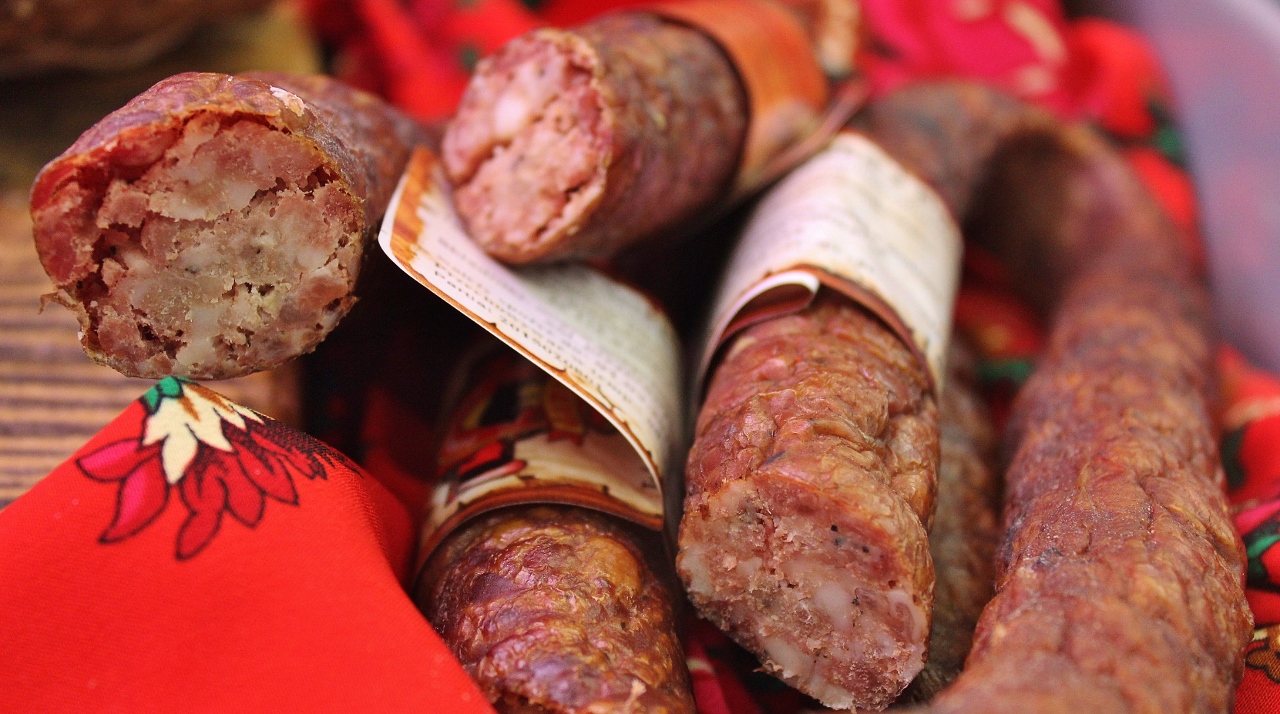 When I first came across the Małopolska booth I had nothing special in mind and just grabbed a travel brochure they had on offer. Then I went. Why is it that neighbouring countries never feel as sexy as the destinations far away? In the evening, I browsed through the brochure and, surprisingly, it wasn’t only extremely well made but I had to admit that this region surrounding the world famous city of Krakow had a lot to give. Monuments, traditions, but – as you might imagine – something connected with food as well. The most appealing thing to me when it comes to food from Poland is undoubtedly the variety of different sausages. So I went back to the Małopolska booth the next day and tasted what was called a „Dorfwurst“, made by Gawor, a small company from Podstolice which lies just 10 km south of Krakow. The sausage tasted like it should: meaty, gritty yet soft, and – that’s the main thing – beautifully spiced with garlic and other heavenly ingredients. „Kiełbasa myśliwska“ is the Polish name for that product, and if you happen to be in the region and the lady in the shop smiles a bit more to you than the one at the booth did to me, you will agree as well that you’ve rarely tasted a better sausage.
When I first came across the Małopolska booth I had nothing special in mind and just grabbed a travel brochure they had on offer. Then I went. Why is it that neighbouring countries never feel as sexy as the destinations far away? In the evening, I browsed through the brochure and, surprisingly, it wasn’t only extremely well made but I had to admit that this region surrounding the world famous city of Krakow had a lot to give. Monuments, traditions, but – as you might imagine – something connected with food as well. The most appealing thing to me when it comes to food from Poland is undoubtedly the variety of different sausages. So I went back to the Małopolska booth the next day and tasted what was called a „Dorfwurst“, made by Gawor, a small company from Podstolice which lies just 10 km south of Krakow. The sausage tasted like it should: meaty, gritty yet soft, and – that’s the main thing – beautifully spiced with garlic and other heavenly ingredients. „Kiełbasa myśliwska“ is the Polish name for that product, and if you happen to be in the region and the lady in the shop smiles a bit more to you than the one at the booth did to me, you will agree as well that you’ve rarely tasted a better sausage.
Saldac
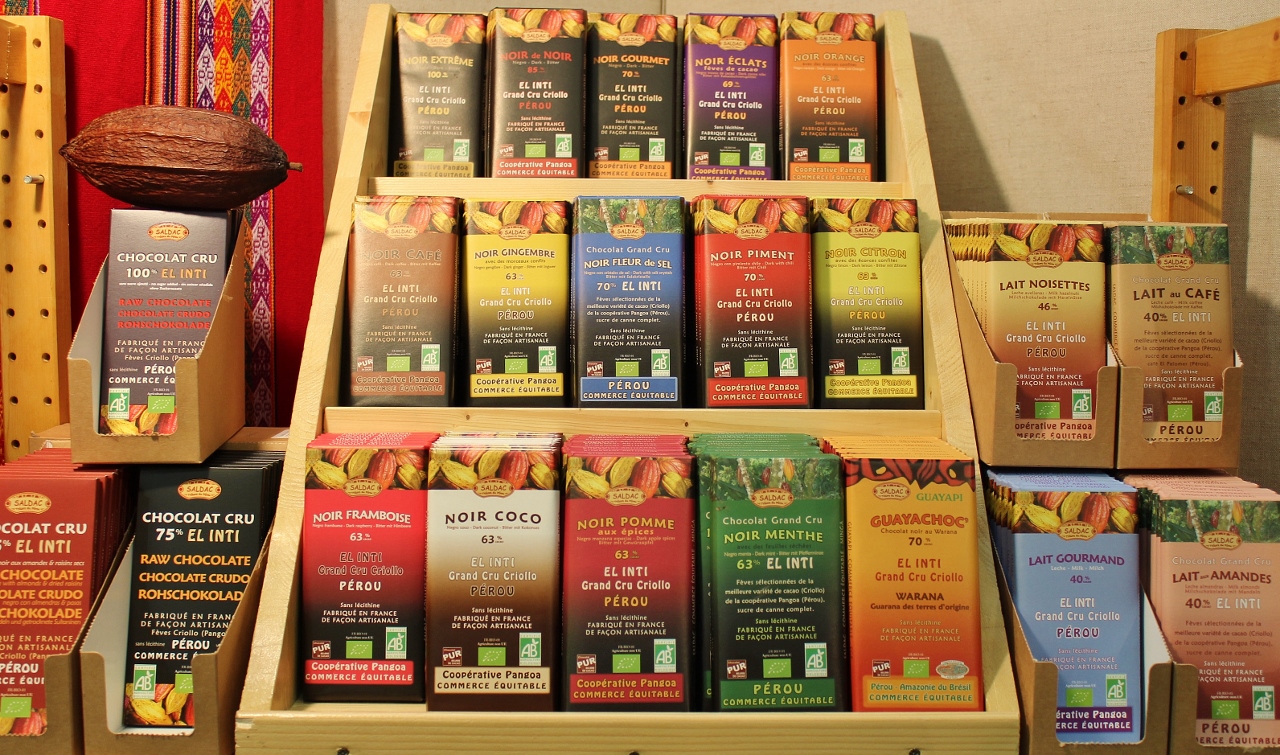 When it comes to the broad category of „chocolate“, you will almost certainly find out before long that it consists of different interpretations of allegedly the same thing. The common denominator, however, usually crawls around on a rather low level. Looking at yer olde sweet supermarket treat, be prepared to find a combination of either cheap or strange ingredients (fresh from the chemists), wrapped in a sleeve of child labour and unfair trade. Sometimes you really get what you pay for. Here at Saldac, everything is different. And interestingly, also different from the other fine chocolate producers I’ve already mentioned. In their “El Inti” raw chocolate from Criollo cocoa beans they use exactly two ingredients: organic cocoa beans and whole raw cane sugar. This creates an unbelievably intense chocolate feeling, a raw and slightly burnt cocoa character, a red berry fruitiness and a very pure, smooth and elegant finish. This is state of the art chocolate. To achieve this result, the Saldac guys from Montélimar, France, have refrained from trying it themselves and have rather looked for an experienced chocolatier in their native Drôme department. Well done, boys.
When it comes to the broad category of „chocolate“, you will almost certainly find out before long that it consists of different interpretations of allegedly the same thing. The common denominator, however, usually crawls around on a rather low level. Looking at yer olde sweet supermarket treat, be prepared to find a combination of either cheap or strange ingredients (fresh from the chemists), wrapped in a sleeve of child labour and unfair trade. Sometimes you really get what you pay for. Here at Saldac, everything is different. And interestingly, also different from the other fine chocolate producers I’ve already mentioned. In their “El Inti” raw chocolate from Criollo cocoa beans they use exactly two ingredients: organic cocoa beans and whole raw cane sugar. This creates an unbelievably intense chocolate feeling, a raw and slightly burnt cocoa character, a red berry fruitiness and a very pure, smooth and elegant finish. This is state of the art chocolate. To achieve this result, the Saldac guys from Montélimar, France, have refrained from trying it themselves and have rather looked for an experienced chocolatier in their native Drôme department. Well done, boys.
WAD
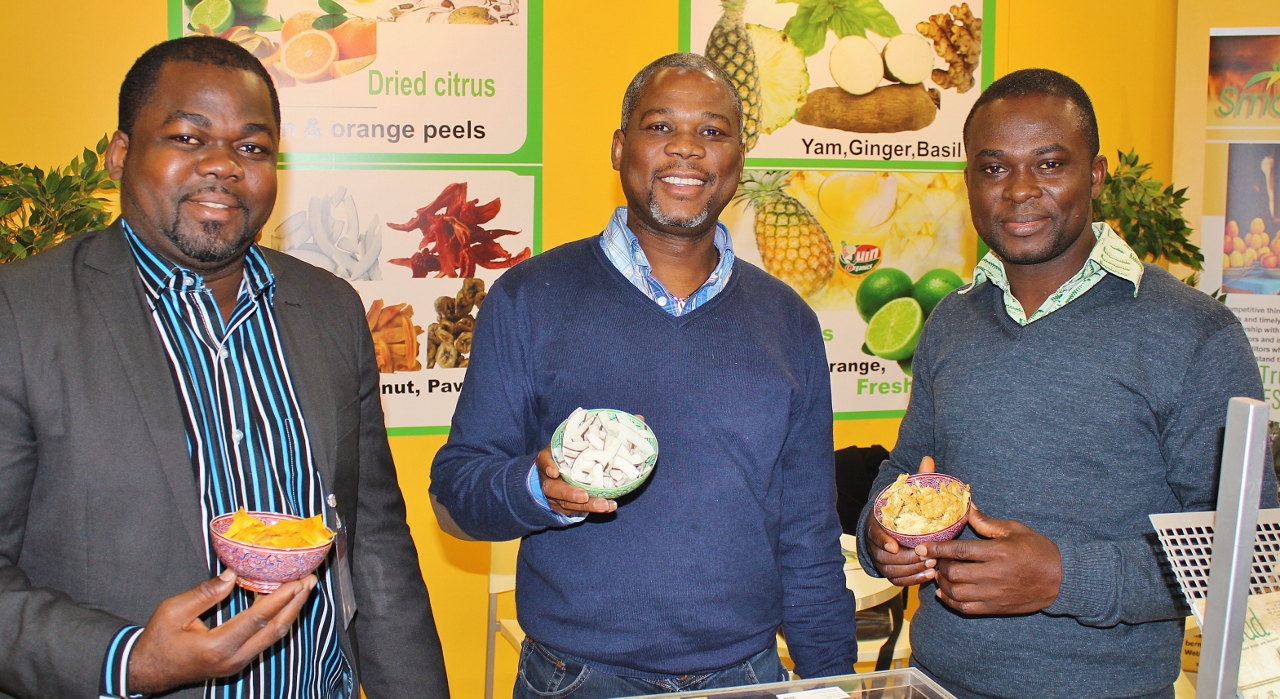 WAD means „Weija Agricultural Development“ which is perhaps only self-explanatory for those knowing that Weija is a city near Accra, Ghana. Here in this favourable tropical climate all kinds of fruits are grown, but it seems that mangos, pineapples and coconuts do especially well. Or, at least, that’s what WAD has on offer. In dried form, so that it travels a lot better than fresh fruit. The other advantage is that the fruits are actually harvested ripe, something that never happens with tropical fruit that enters your organic supermarket. Of course, they have thought about other things as well at WAD: The products are certified organic, they are made in a traditional manner by small-scale farmers, and neither fertilizers are used nor pesticides. The fruits are dried on the spot in Ghana with the help of hot air dryers that work (despite their name) at a low temperature, which allows the dried fruits to keep their nutritive qualities. The distribution (so far, you can buy the WAD products in Germany, Switzerland and Italy) takes place from Switzerland, which may be beneficial when you order them from a neighbouring country. I must admit that I haven’t been a big buyer of dried fruit so far, but I admit as well that I spontaneously decided – after sampling these aromatic appetizers – to change exactly that.
WAD means „Weija Agricultural Development“ which is perhaps only self-explanatory for those knowing that Weija is a city near Accra, Ghana. Here in this favourable tropical climate all kinds of fruits are grown, but it seems that mangos, pineapples and coconuts do especially well. Or, at least, that’s what WAD has on offer. In dried form, so that it travels a lot better than fresh fruit. The other advantage is that the fruits are actually harvested ripe, something that never happens with tropical fruit that enters your organic supermarket. Of course, they have thought about other things as well at WAD: The products are certified organic, they are made in a traditional manner by small-scale farmers, and neither fertilizers are used nor pesticides. The fruits are dried on the spot in Ghana with the help of hot air dryers that work (despite their name) at a low temperature, which allows the dried fruits to keep their nutritive qualities. The distribution (so far, you can buy the WAD products in Germany, Switzerland and Italy) takes place from Switzerland, which may be beneficial when you order them from a neighbouring country. I must admit that I haven’t been a big buyer of dried fruit so far, but I admit as well that I spontaneously decided – after sampling these aromatic appetizers – to change exactly that.
Zoiglbauer
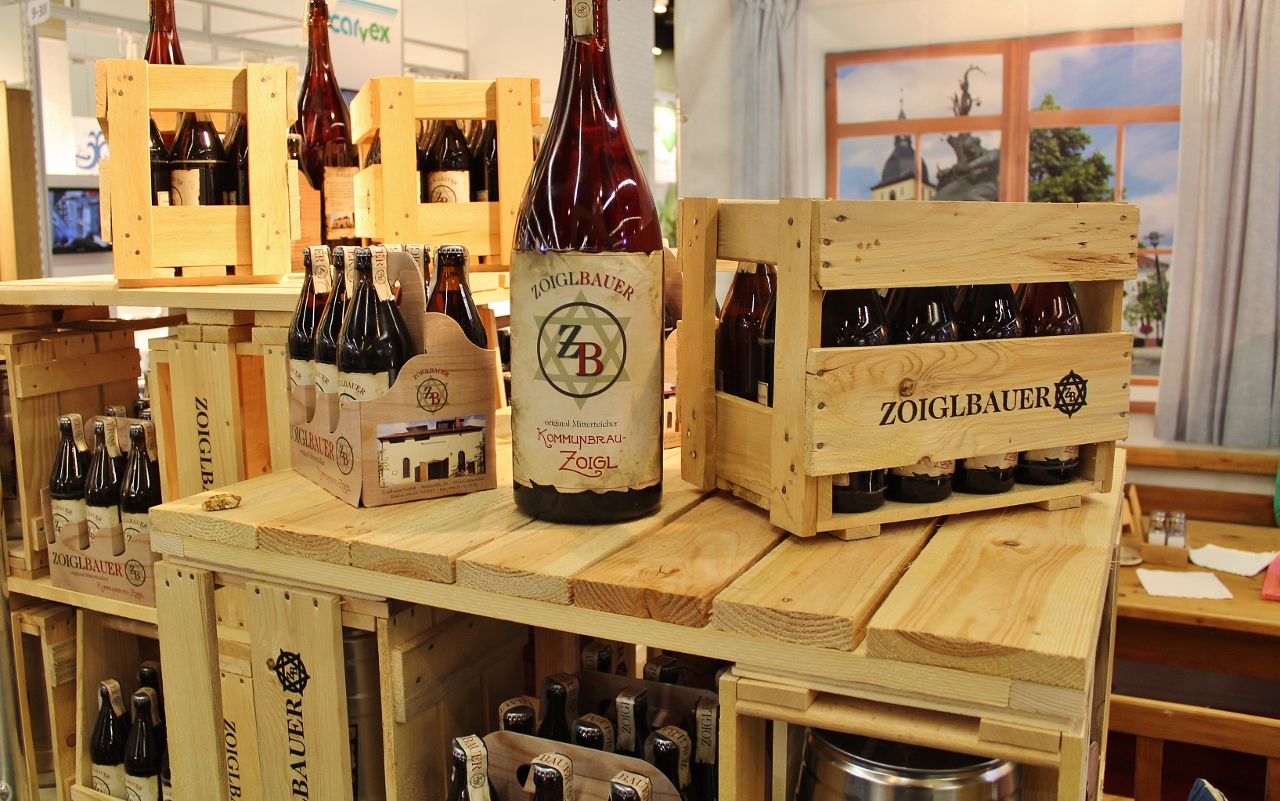 Herbert Männl is a real entrepreneur. And he is a craftsman. And he loves the region he has spent all his life in. If you put these three elements together, you’ll end up quite unsurprisingly with a success story. The “Oberpfalz” is a region in Bavaria, for which the proverb “fox and the hare bid each other goodnight” seems to be invented. Especially since the two traditional craft trades, porcelain and textiles, are no longer able to keep up with global competition. The “Sommerfrischler”, traditional holiday makers who used to come for hiking and because of the healthy air in this woody region, somehow begin to die out. And so Mr. Männl, a baker in his former life, decided to brew a Zoigl and fill it into bottles. A what? Well, “Zoigl” is a legendary tradition of the region, a bottom-fermented and unfiltered beer that is produced alternately by the citizens of a village or a town, who have the right to brew beer in a communal brewery. The individual brews thus taste a little different every time, and the beer is exclusively to be served at each brewer’s location, fresh from the vat. This means that you can try a real Zoigl only at the place where it is brewed. And since only a few real beer enthusiasts are regular visitors of the region, it isn’t known elsewhere what „Zoigl“ means, let alone how it tastes like. And so Herbert Männl brews his true Zoigl in the “Kommunbrauhaus” in Mitterteich, but he fills it into bottles and sells it – who would have guessed it – now even in organic supermarkets in Hamburg and Berlin. The spent grain, by the way, is used for his bread, so nothing is wasted.
Herbert Männl is a real entrepreneur. And he is a craftsman. And he loves the region he has spent all his life in. If you put these three elements together, you’ll end up quite unsurprisingly with a success story. The “Oberpfalz” is a region in Bavaria, for which the proverb “fox and the hare bid each other goodnight” seems to be invented. Especially since the two traditional craft trades, porcelain and textiles, are no longer able to keep up with global competition. The “Sommerfrischler”, traditional holiday makers who used to come for hiking and because of the healthy air in this woody region, somehow begin to die out. And so Mr. Männl, a baker in his former life, decided to brew a Zoigl and fill it into bottles. A what? Well, “Zoigl” is a legendary tradition of the region, a bottom-fermented and unfiltered beer that is produced alternately by the citizens of a village or a town, who have the right to brew beer in a communal brewery. The individual brews thus taste a little different every time, and the beer is exclusively to be served at each brewer’s location, fresh from the vat. This means that you can try a real Zoigl only at the place where it is brewed. And since only a few real beer enthusiasts are regular visitors of the region, it isn’t known elsewhere what „Zoigl“ means, let alone how it tastes like. And so Herbert Männl brews his true Zoigl in the “Kommunbrauhaus” in Mitterteich, but he fills it into bottles and sells it – who would have guessed it – now even in organic supermarkets in Hamburg and Berlin. The spent grain, by the way, is used for his bread, so nothing is wasted.
Now, of course, there are some extreme traditionalists (or traditional extremists) accusing Mr. Männl for selling out the Zoigl culture. And in fact, you are entitled to see “Zoigl” as a term for something totally traditional, totally local and totally non-commercial. But Zoigl also stands for an endangered species because of the once several hundred communal brewhouses only five have survived. In this respect (and if you ask me personally), someone like Mr. Männl doesn’t primarily water down the Zoigl culture, but rather helps to preserve it. Because through his transportable beer other parts of the world have the occasion to realize the strange and fascinating things happen deep in the Bavarian forest. And one fine day they decide to pay a visit to the region.
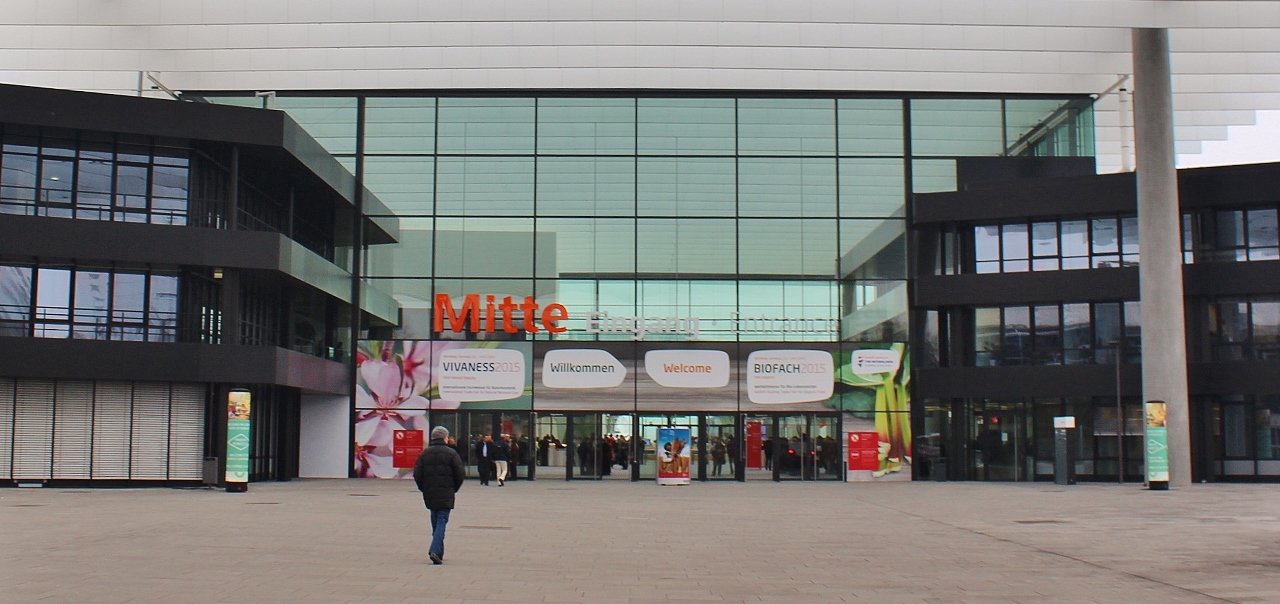 And so my tour at BioFach has come to an end for this year. I hope you liked the small kaleidoscope I’ve tried to present. However, if suddenly a fairy appeared and I had one free wish (context-bound, of course), I would opt for a few more international food bloggers next year. Because the fair deserves to be visited. I’ve at least found a surprisingly great number of interesting products at the BioFach, products with character and verve, much more than I was able to mention here. And this we shouldn’t just leave to the journalists that only copy press releases into their articles, should we?
And so my tour at BioFach has come to an end for this year. I hope you liked the small kaleidoscope I’ve tried to present. However, if suddenly a fairy appeared and I had one free wish (context-bound, of course), I would opt for a few more international food bloggers next year. Because the fair deserves to be visited. I’ve at least found a surprisingly great number of interesting products at the BioFach, products with character and verve, much more than I was able to mention here. And this we shouldn’t just leave to the journalists that only copy press releases into their articles, should we?
